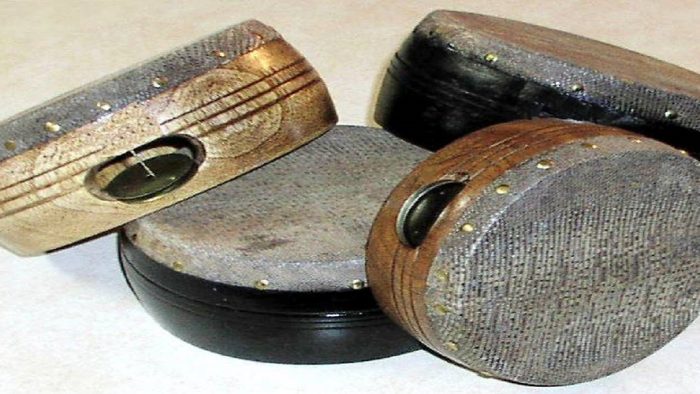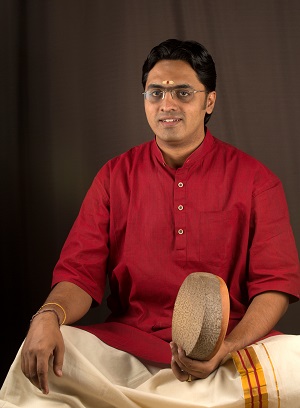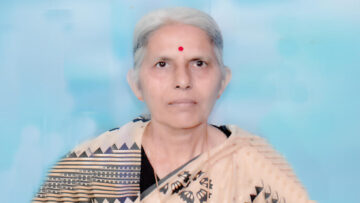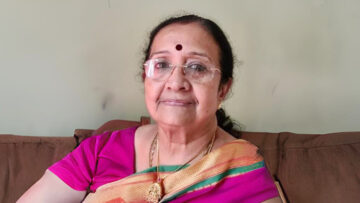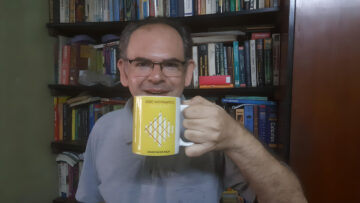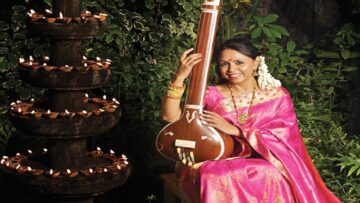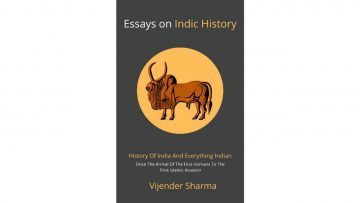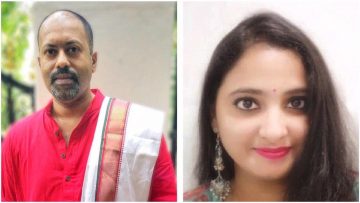It was Carnatic vocalist DK Pattammal who asked Khanjira maestro G Harishankar’s mother, “From your womb, did you deliver a baby or the Khanjira itself?”
This is the late Harishankar’s 60th birth anniversary year, (Birth: June 10, 1958) and top Khanjira soloist Bangalore N Amrit pays tribute to his guru, who paved the way for artistes like Amrit to maintain the glory of this special upa-pakkavadyam. Amrit’s gutsy journey as a Khanjira soloist has been both a challenge and a responsibility.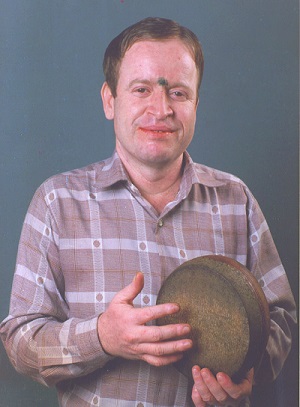
Guru Harishankar
Among the percussion instruments being played in Carnatic concerts today, the Khanjira comes after the Mridangam and Ghatam in hierarchy. While such a ranking is problematic in itself, it has also led to a struggle by Khanjira players to specialise in the instrument as soloists.
Played with one hand on one surface, the small single frame drum with a pair of jingles sounds simultaneously bright and resonant. Deceptively small, it can produce a range of sounds that can keep up with the other instruments it plays with.
There were great Khanjira players before Harishankar, including Dakshinamurthy Pillai and Manpoondia Pillai, both from Pudukottai. What set Harishankar apart was his ability to make the Khanjira sound exciting, distinct, and create a desire among listeners to want to hear more of it independently.
“Harishankar gave the aspects of technique and sounding and achieving speeds with clarity and power a new dimension, a new scape and scope. What was usually thought not possible on a single handed instrument, he made look easy and simple,” says Amrit.
Amrit is a multi-instrumentalist and has learnt to play both the violin and mridangam along with the Khanjira. His father, violinist Basavangudi G Nataraj did not want his son to play the Ghatam as he felt that his finger joints would harden and he would lose the sensitivity required to play the Mridangam. Amrit’s first few performances were with the Khanjira. Since Nataraj had a regular mridangist – Amrit’s first guru, M Vasudeva Rao – he would ask Amrit to play the Khanjira in smaller concerts. There was a Khanjira at home and Vasudeva Rao would teach the basics and ask Amrit to practice.
For the first two to three years, Amrit enjoyed the thrill of playing with senior musicians including his father. But, “when I started playing with other Mridangam players I realised that I was not going up. Actually my teacher was coming down for me. Only then I realised the seriousness of this path (of making the Khanjira a solo instrument). I was always working on my methods, but not in the direction that would set me apart. I realised that this needs much more work, much more effort, much more training to become technically sound.”
Amrit began listening to Harishankar’s playing with mridangist Karaikudi Mani for Shruti Laya, Mani’s organisation. “I decided then that if I have to play the instrument it should be like this. At any speed, any pattern, it should sound like this. This would make me a different player.”
The wait for a Shruti Laya tape was three months after placing an order, as HMV would release only 10-15 copies in Bangalore. Amrit has an old tape recorder on which he would play the recordings, rewind and try to match it with his own playing.
Listening to the sounds produced is perhaps more important than even following hand movements in learning most Indian percussion instruments as the hands are not visible while playing them. So in the initial stages, Amrit was able to learn by listening to the tapes.
“For the Thavil, Mridangam and Khanjira it is very difficult to watch and learn. Our hands are in the opposite direction, parallel or perpendicular to the line of vision. So most of the time you have to learn to understand positions and movements by the sound. This is difficult but if you have a sense of the sound you can get there,” says Amrit.
This kind of learning from recordings, did not obviate the need for a guru. “We need a teacher because sometimes we find ourselves in a position where we are enjoying ourselves but it may not be as good as it should be. Tradition is something that does not go only by sounding. It is also about lineage, what people followed, patanthara, bani. All these things add up to those sounds,” says Amrit.
Even today, Amrit’s mridangam guru, A V Anand can be seen at his performances. “He is watchful and tells me if things need to be refined. We need to have a consciousness for the guru, whether he is there in front of us or not, that we are doing this for them too. We need to think that only if we do things in a certain way that we are satisfying their standards. After a point we start to enjoy that rigour and that is the shift from practice to saadhana. That is when you find yourself in a whole different realm. After that point you are so liberated that you need not worry about anything except refining your art,” says Amrit.
Amrit became a staunch follower of Harishankar’s style even before he started learning from him. So, when one of his friends told him about a CCRT scholarship ad, he saw it as an impetus to reach out to Harishankar.
Communicating with Harishankar was difficult initially as he spoke Tamil and Amrit, whose mother tongue is Telugu, didn’t know the language. “I would tell him to speak in Tamil. I understood the instrument, so I could understand his feelings and his thought process. In this limited mode of communication, he gave me a totally different picture of what I knew about the instrument myself.”
For one, the most complex of phrases and movements were made to look easy and simple, and would seem as if they sounded better with one hand rather than two. “The tone of the instrument, the way it should be played in a tani avartanam or laya vinyas, what should be your presentation, your sound if you are playing solo, what should be your weaving of patterns into your solo playing – all this was etched in my mind.”
First came the negation of the notion that if one learnt to play the Midangam, one could play any other percussion instrument. “I had learnt to play the Mridangam, but realised that while those concepts can be adapted for some aspects, they cannot apply to technique or sounding. Playing in one hand I have to bring out all the tones and intonations on one side. You are playing the same Tha Dhi Gi Na Thom. But if it doesn’t sound the way it should sound, then you are just playing the Mridangam on the Khanjira,” says Amrit.
For the most part, every upapakavadhya player is confined to his/her own instrument’s style of playing, with Khanjira players playing only Khanjira “sollu.” But in his concerts, Harishankar was known to play Mridangam concepts on his Khanjira. According to one account, when a 2 Kalai Chavukam keerthanai was played, he would instinctively play Keezh Kala Nadai, a trade mark of the Palghat school of Mridangam playing, rather than Madhyama Kalam.
On another occasion, at a Layavinyasa concert in London, it was Umayalapuram Sivaraman on the Mridangam and Harishankar on the Khanjira. Sivaraman, in his unique style of alternative playing on each side, was playing on the right side with his right hand for a few time cycles and then the same on the left side with his left hand and kept alternating. Harishankar in turn also alternated between his right hand and left, showing great control of his instrument, as well as ambidexterity. He played his entire turn, alternating between his right and left hand.
The Khanjira player has to adapt to what is happening on stage, says Amrit. “Depending on the Mridangam bani, everything changes for me. There are so many different banis of mridangam that I have to know. As the Khanjira is the second accompanist, I should be in a position to answer back in the same style. That is my training. It has to be relatable. If you are playing with TK Murthy, you have to know his traditions, his bani, only then can you can gel with him. It need not be elaborate. It can be a small section — but if you are aligning with his patanthram and thought process that is enough.”
If Amrit plays with a Thavil artiste, the music changes with the volume first. Amrit says that no amount of amplification for the Khanjira is enough while playing with the Thavil. “That instrument itself is so loud — additionally they have two microphones and they play with fingers and sticks. I have to do it bare handed with single handed playing. Matching that kind of sharp tones is difficult. It is only with hard core technical playing that you can match that kind of sound, the patterns and speed.”
The speed of the Thavil is difficult to match. The Khanjira is in a better position to match it as compared to the Mridangam and Ghatam, says Amrit, because it has sharp and base tones only. “Only the Chande is equivalent to the Thavil. But the Khanjira can match these instruments. We have to understand the balance of left-right of the Thavil and change our thought process/bani to match that play. You can’t play like one plays with the Mridangam. Thavil patterns are totally different.” Playing solo is comparatively easier, says Amrit, as he can weave patterns around whatever ‘number’ he chooses to play.
Playing in a vocal concert has its own requirements. “Every composer has his own chandas (metre), his own formation, his or her own way of interpreting the lyrics on the beat. So you cannot play for the tala when the music is going somewhere else. Playing for O Jagadhamaba is totally different from playing for O Rangashayee. O Jagadhamba is softer, I cannot be banging away on that. O Rangashayee is more robust.”
Then there is the difficulty with unusual talas. Amrit says that it is rare to hear compositions in different talas like Mishra Chapu, Mishra Jathi Jampe Tala, Khanda Jathi Dhruva Thala. “You don’t get to see these talas in compositions. It is very rare to see them in even in Layavinyasas or percussion ensembles. All this affects our performance in following someone.”
In some instrumental concerts, Amrit sayas that when everything is going in a groove, the Khanjira artiste has to follow that. Playing with Mandolin U Shrinivas required one to keep the groove. Besides, “they don’t have the facility of keeping tala while playing their instrument, so they are dependent on the rhythmist for that. You need to do a double role. Keep the rhythm and do some active following also,” says Amrit.
To play and not to play
Harishankar’s training required one to be sensitive to whatever was being played on stage. The Khanjira does not have to play throughout a concert unlike the Mridangam. There were concerts where Harishankar would be silent and suddenly would burst into the scene with a thunderous phrase and the audiences would be thrilled.
There’s proportion to everything in Carnatic music. Every artiste has to have a musical sense of what the other is doing on stage. “If the Mridangam player is not playing anything, you must be quiet. Even playing one stroke becomes noise. Of course, at a younger age, we have banged away. As we mature, as we understand music more and as we listen to the old masters, we realise this is why they didn’t play at certain times. Many a time we hear Palaghat Mani Iyer giving long pauses. Initially, we don’t understand what is happening and then at one point he just comes in,” says Amrit.
Many a time his rasikas walk up to Amrit and express disappointment that he has not “played much” in a concert. Sadly, even organisers sometimes ask this as they want ‘paisa vasool’ for the fees they pay accompanists! But as was the case in a concert of OS Thyagarajan (OST), accompanied by Shivaraman and Harishankar, where Harishankar did not play at all while OST sang Devi Brova (Shyama Shastri), but burst into the scene when it was followed by Ora jupu (Thyagaraja), it is necessary to know when the krithi does not require the Khanjira, says Amrit.
“I am done with the accompaniment role in Carnatic music though, as there really is no space in it for me,” he says with some regret. “I don’t want to be in a situation anymore where the lead artiste turns to me and gestures ‘stop.’ I now seek to fulfil the Khanjira’s role in solo performances.”
“I am on a mission for the Khanjira, but I am not a rebel”
Has the role of the Khanjira player in a regular concert evolved?
Not really. I fully understand that the Khanjira is an upa-pakkavadya with a limited role in the Kuthcheri format. I don’t rebel against that, I respect that. But I wish others would not disrespect the artiste playing Khanjira, as they so often do. Anyway, the hierarchical nature of a kutcheri concert, does not always give rhythmists the space to show their skills. Many a time one is not required to do anything special in a concert. Even if you don’t do anything you will get another concert. I may practice something but I don’t get a stage to showcase that. That’s a fact for Violin players, Mridangam players, and Khanjira players. You are not preferred in the hierarchical framework. This hinders the art. As for me, I am on a mission, a mission that may sabotage my commercial career, but can help showcase my art.
What has been your on-stage response to this?
At every concert I speak about different perspectives. One is not fighting faces and names, but mind-sets and thought processes. I have been playing many concerts where there is no Mridangam at all for nearly 13-14 years. These are not only fusion concerts but also regular concerts.
My volume is higher because I have worked for it. I play with a higher volume all the time. So coming down is a little tough for me. Even without microphone I sound louder than other Khanjira players.
It’s not that I am against any instrument. I am just offering a different sound. This is my individual path and it’s not a rebellion. I am not saying our concert set up is bad. I can’t fit into it and that is my problem. I refuse many concerts because I cannot play freely. I play for the music not the set up.
How do you reach out to new audiences?
Finding a knowledgeable audience is rare. Very often in a non-Carnatic concert scenario people may not have the knowledge of what we are playing.
In spaces where people are not aware of these technical aspects, the process is similar to developing a language. You start with rhymes, you start with small stories, attract them and then go on to Shakespeare.
Here it’s the tone and sound of the instrument which brings them in. Initially you have to be a little ‘groovy’. Set a groove and based on that groove change things so that they understand that something else is happening. You have to set a basic 8 beat groove, when they get on to that groove, you explore further. If you start with 9/8 sub divisions from the beginning, they will go away as they will feel this is something that they can’t digest. Some people may not understand the math, but maybe good in following the groove.
Even in India, there are very few concerts where I can showcase all the material I know. Where I can try and explore the unexplored. For instance Sankeernam is unexplored in Khanjira. (putting a chatushram and kantam together, 8 is the thala and 9 is the sub-division.) Playing Sankeernam on Adi Tala is very difficult. It is regularly heard on the Thavil, but is very difficult even on the Mridangam. I have been playing Sankeernam for almost 12 years now on a regular basis. From last year I started playing 10-8 (Sampoorna Khanda Nade). Last week I started playing 11/8. Step by step I am trying to take the leap. 11/8 has not been tried in any instrument so far. It has been tried on the Thavil but not as per beat, as two beats. You break 11 as 5 and half and 5 and half. Not as 11 and 11. I have not heard it played on the Thavil and on the Mridangam it is impossible.
What are the unique phrases of Harishankar? In a recent concert your reserved one for the end.
“Tha_ Dhi_ Tha_kita Thakathari kita thom” was the unique phrase of Harishankar sir. Pudukkottai Dakshinamoorthy Pillai created this phrase and composed a very popular ‘Korve’ with it. The Korve is of 3 avarthanas (cycles) of Adi Tala (8 beat cycle) in Chaturashra Nade (4 subdivisions per beat). The same Korve can be finished in 2 Avarthanas of Adi Tala when recited in Trishra Nade (6 subdivisions per beat). This Korve with this particular concept was invariably played by Harishankar in unbelievable tempos.
So I thought of offering a tribute to both the legends and composed a special Mohara Mukthaya and Ardhi (formal ending of a Laya Vinyasa) in this phrase. The Mohara is in Chaturashra Nade (4 subdivisions per beat) composed in Damaru Yati. The Korve is composed in three Nades – Chaturashra Nade (4 subdivisions per beat), Khanda Nade (5 subdivisions per beat) and Trishra Nade (6 subdivisions per beat). The Ardhi in Chaturashra Nade (4 subdivisions per beat) is composed in Gopuccha Yati.
There are many other signature phrases of Harishankar Baani.
a) Tha_kitathom Dhi_Tha_kitathom Tha_Dhi_Tha_kitathom (12 Aksharas phrase)
b) Tha_Ki_Ta_Tha_kitathom Tha_Dhi_Tha_kitathom Dhi_Tha_kitathom Tha_kitathom Kitathom (20 Akshara s phrase)
c) Tharikitathom_kitathom
This is a 10 Akshara phrase played as the high speed variant of Tha Dhi Gi Na Thom which is 5 Akshara phrase.
d) Tha_kitathakathom_kitathom
This is a 12 Akshara phrase played as the high speed variant of Tha Dhim.Gi Na Thom which is 6 Akshara phrase.
What are the famous Korves by Harishankar?
Harishankar could understand any calculation that was played on the spot and could replay it immediately. He would play on the spot but also made variations within those compositions, within the available time. He also was a master at playing any given Korve in Trishra Nade. He reproduced the Korve played on stage in many speeds on the spot. He would leave musicians and listeners spellbound by playing the Korve in reverse. He mostly played Korves composed by his Gurus and great legends and his actual thought process in calculations never came out in a big way.
Korraippus are the reduction part which is more like a question answer session. Harishankar would pick up any formation on the spot and replicate it easily. The most attractive point in his performance was when he played the reverse of a pattern. This was never done before. It was his sheer genius that he did this with absolute confidence and grace. Sometimes he used to play the reverse of the whole question as an answer. No Khanjira or Ghatam did this before him. This gained huge popularity with not only audiences but also fellow musicians.
What was novel about his accompaniment?
Harishankar would be like a shadow. He would join with the patterns played on the Mridangam with a great sense of aesthetics. Sometimes he would embellish the same pattern to make it sound more interesting. He had a fine knowledge of krithis and sangathis. He would sometimes follow the music and embellish the krithi but not hindering or interrupting the Mridangam in any way. For some Krithis in Vilambakaala he would rarely play or play just a little, in a sober way. When the occasion called for it, he would attack with vigour.
His fillers were literally fireworks. He waited for empty spots and fill them in with small phrases with great speed, intensity and clarity.
You bend the surface with your left hand? Was that an innovation by your guru? How does that effect the sound?
A: Yes, the surface of the instrument is bent to create a ‘Gumuki’. That was not his innovation, but he brought in many changes and refinements in the Gumuki.
Bending the surface in a Khanjira is very easy. Some yesteryear players used to bend it too much and at unwanted places. At times, they would curb the natural tone of the instrument by pressing the surface constantly.
Harishankar was known for a well balanced, measured, appropriate usage of ‘Gumukis’ in his playing.
He actually did not play many ‘Gumukis’ in the way one would have expected. He never used unwanted ‘Gumukis’ in his rendition.
He never allowed an unwanted ‘Gumuki’ to spoil the feel of the Nade or the Jathi pattern. He used it like adding ‘salt to the food’. This was a benchmark set to the playing technique of Khanjira. His usage of ‘Gumukis’ also followed the ‘Gumuki’ playing style
and pattern of the Mridangam. With this new style, the Gumukis sound more appropriate, sensible, sounded better in flow and free in tone.
How did Harishankar change the conventional holding position?
Earlier some players held the Khanjira near the lap and a little upwards according to their convenience. In this position sometimes the instrument could not be even seen from a distance. Holding the instrument in this lower position did not help the playing technique either.
Harishankar changed the position of holding the instrument. He held the instrument at the chest. His position of keeping the instrument upright caught the attention of the audience easily. More importantly, this position enables the playing hand to move front, back, out and in with great ease. At this height the variations in the hand movement can be maneuvered much easily than at any other position. Due to these advantages,
Harishankar’s position of holding the instrument is been followed widely.
You play with more than one kanjira in your solo concerts. They are of different pitches? Can you change the pitch? How and when do you have to do that?
Yes. I have three or four Khanjiras in all my concerts. Each instrument has a different texture, tone and nature. Every venue is different in terms of weather and acoustics. Each instrument behaves in a different way in a different atmosphere and weather. So I will have to gauge these conditions and carry instruments to suit the venue.
Khanjira does not have a distinctive pitch unlike the Mridangam, Ghatam or Morching. It is tuned the way the base side (Thoppi) of the Mridangam is tuned.
The tone of Harishankar’s Khanjira is very different to that of earlier artistes. Previously, the Khanjira was set to a tone that was much lesser than the tone of the Thoppi of the Mridangam. Because of this setting, the tone of the Khanjira was sometimes not so audible and less vibrating and sustaining.
Harishankar set the tone to a higher level to get even a richer Naadam with vibration and sustenance. The tone is set either to the Mandra Sthaayi ‘Gandharam’ or to the Mandra Sthaayi ‘Panchamam’ of the main pitch. That is set to the level of the Thoppi, if suitable. In this way the Khanjira tone sounds musical too.
In some other occasions like Percussion ensembles or Solo concerts, the tone is set to the comfortable level of the instrument. This level sounds very different and refreshing. Now this has become the zorm for setting the tone of the Khanjira in concerts.
Additionally, there are certain frequencies which are heard better in certain levels like the mid and high frequencies. Each individual instrument has a different shape and texture of tone. Due to this factor each instrument has its own unique fine tone.
In each instrument there is a fine setting that highlights the best out of that particular instrument.This tone setting helps us judge this factor and set the instrument’s level.
You have a Hindustani musician student who plays the tabla. How does learning the Khanjira benefit him? How does learning the Khanjira by him be different from say learning any other Carnatic percussion instrument?
Yes, I do have, not one, but many Tabla students learning Khanjira. Not just them, I have drummers, Guitar Players, Saxophone players, Piano players, Flute players and many others from all around the world learning Khanjira, Konnakkol and Karnatak Rhythm concepts for more than a decade now. Learning Khanjira has its own benefits when it comes to the fingering techniques and sounding. It gives a better understanding of the finger movements and possibilities of various patterns that can be played in one hand with ease and grace. Also playing Karnatak concepts like (Kaala, Gathi and Nade) to our Talas gives a whole new different perspective for the people learning this art form.
Disclaimer: The opinions expressed in this article belong to the author. Indic Today is neither responsible nor liable for the accuracy, completeness, suitability, or validity of any information in the article.

